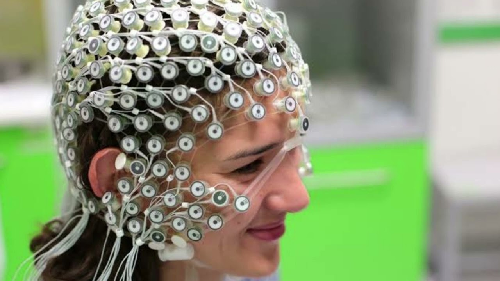The ancient mystery of dreams may soon become a shared cinematic experience. In a monumental leap for neuroscience and artificial intelligence, researchers at the ATR Computational Neuroscience Laboratories in Kyoto have successfully developed a technique using an advanced functional Magnetic Resonance Imaging (fMRI) machine to record and reconstruct the visual content of a person’s dreams for them to “watch” while awake.
The technology, spearheaded by Professor Yukiyasu Kamitani, combines sophisticated brain imaging with cutting-edge AI algorithms to translate neural activity into comprehensible visual information.
The system works by establishing a direct correlation between brain activity patterns and specific visual objects:
- Mapping Brain Activity: Volunteers slept inside an fMRI scanner while their brain activity was closely monitored. As they entered the early stages of sleep—when visual imagery is most common—researchers would briefly wake them to obtain a verbal report of the images they had just seen (e.g., “a person,” “a building,” “a key”).
- Creating a Database: This process was repeated hundreds of times to build a detailed database that links particular brain scans to specific categories of visual items.
- AI Reconstruction: Using this data, a learning algorithm was trained to decode and reconstruct the images based solely on the sleeper’s brain activity.
The research has demonstrated an impressive 60% accuracy in predicting the general content of a dream, with success rates rising to over 70% for predicting specific visual elements.
While the reconstructed dreams are not yet high-definition videos, the advance represents the first time scientists have been able to objectively gather and visualize the subjective experience of dreaming.
“We were able to reveal dream content from brain activity during sleep, which was consistent with the subjects’ verbal reports,” said Professor Kamitani.
Experts suggest this “dream viewer” technology opens new doors for:
- Neuroscience: Gaining a deeper understanding of human consciousness and how the brain processes information during sleep.
- Mental Health: Potentially aiding in the diagnosis of psychological disorders and the study of trauma-related nightmares (PTSD).
The Japanese team is already working to improve the clarity and accuracy of the reconstructions, with the ultimate goal of decoding the more complex narrative sequences, emotions, and actions that occur during deep REM sleep. The age of watching a replay of last night’s adventures may be closer than ever before.







